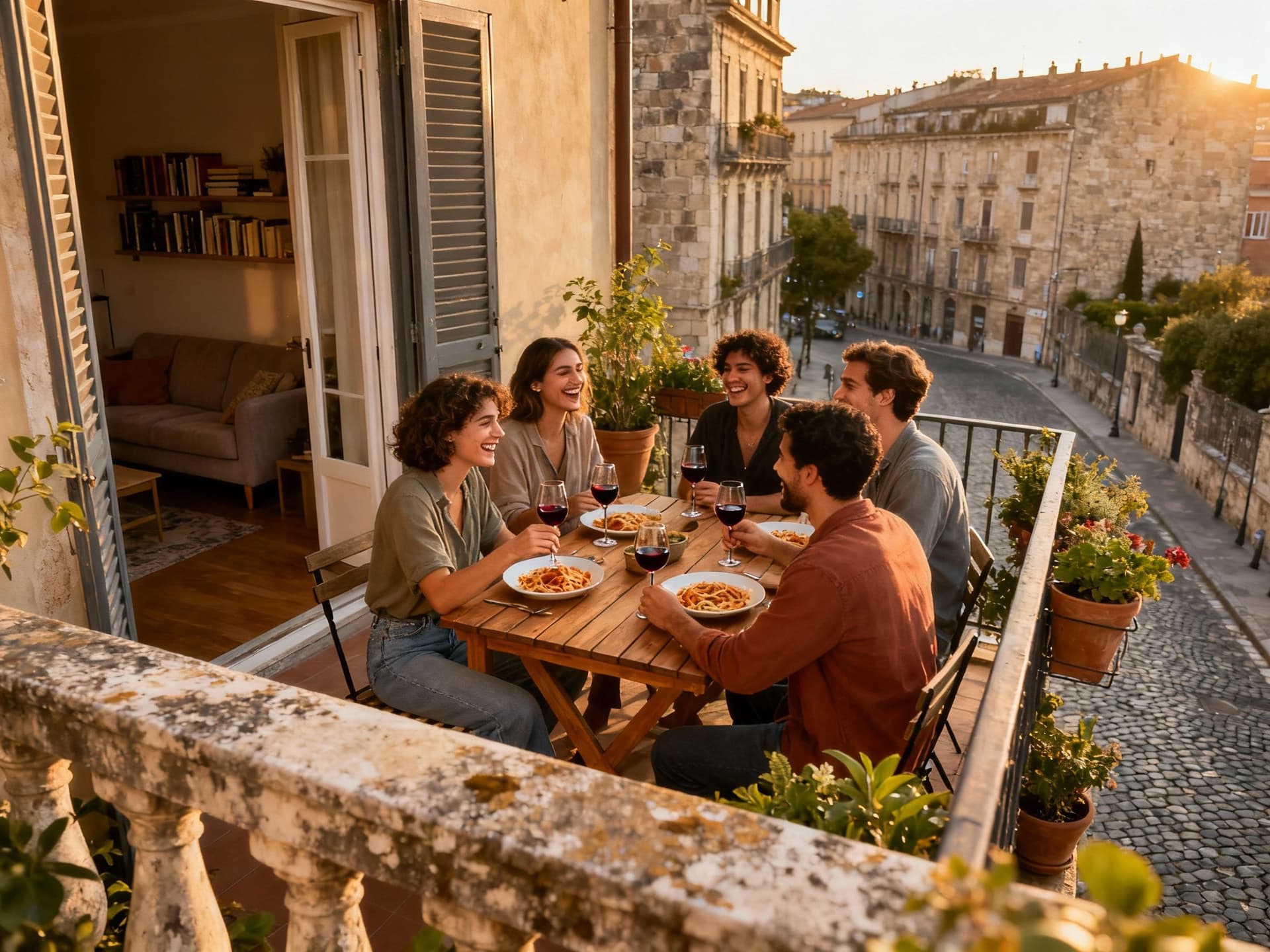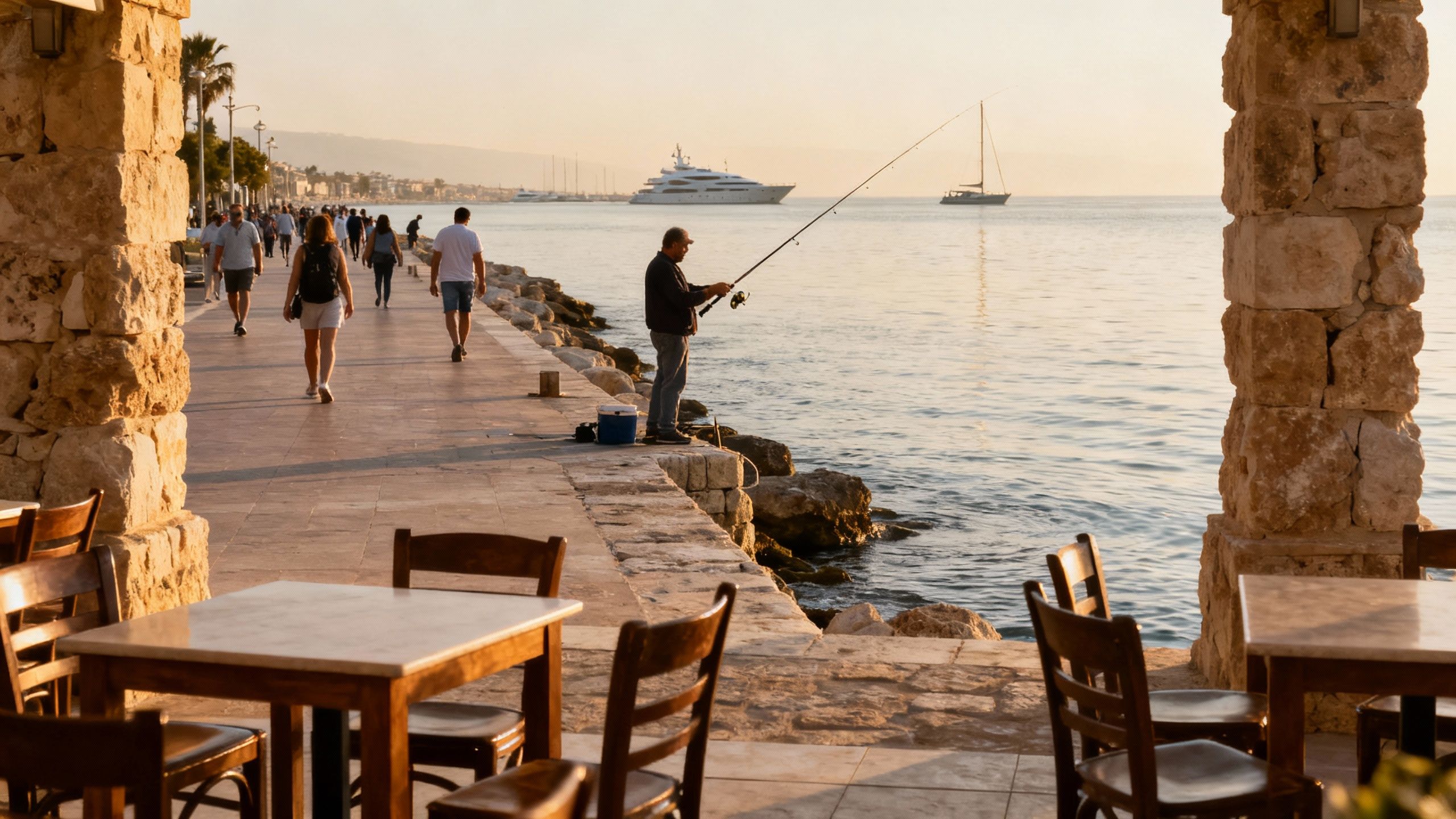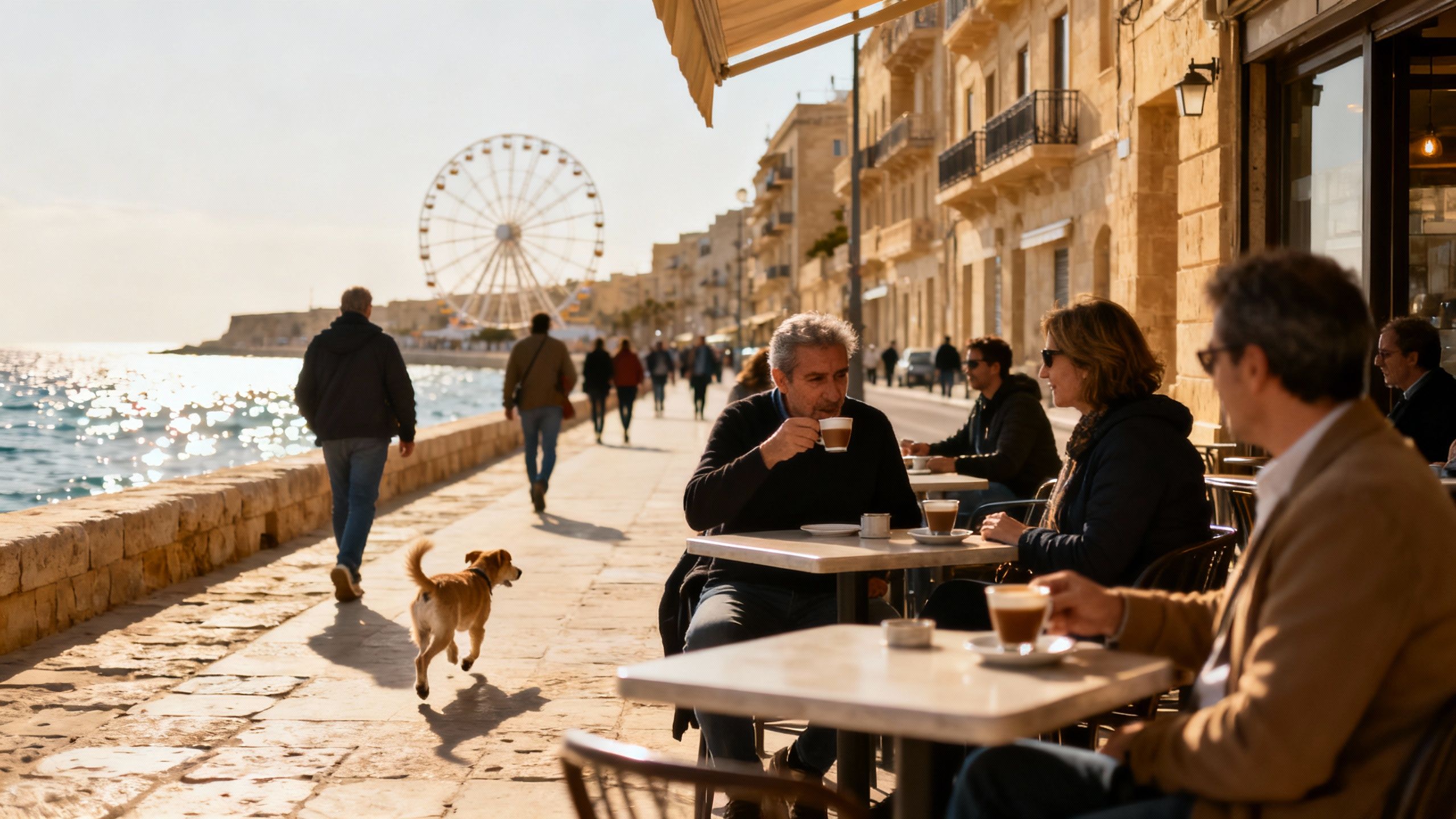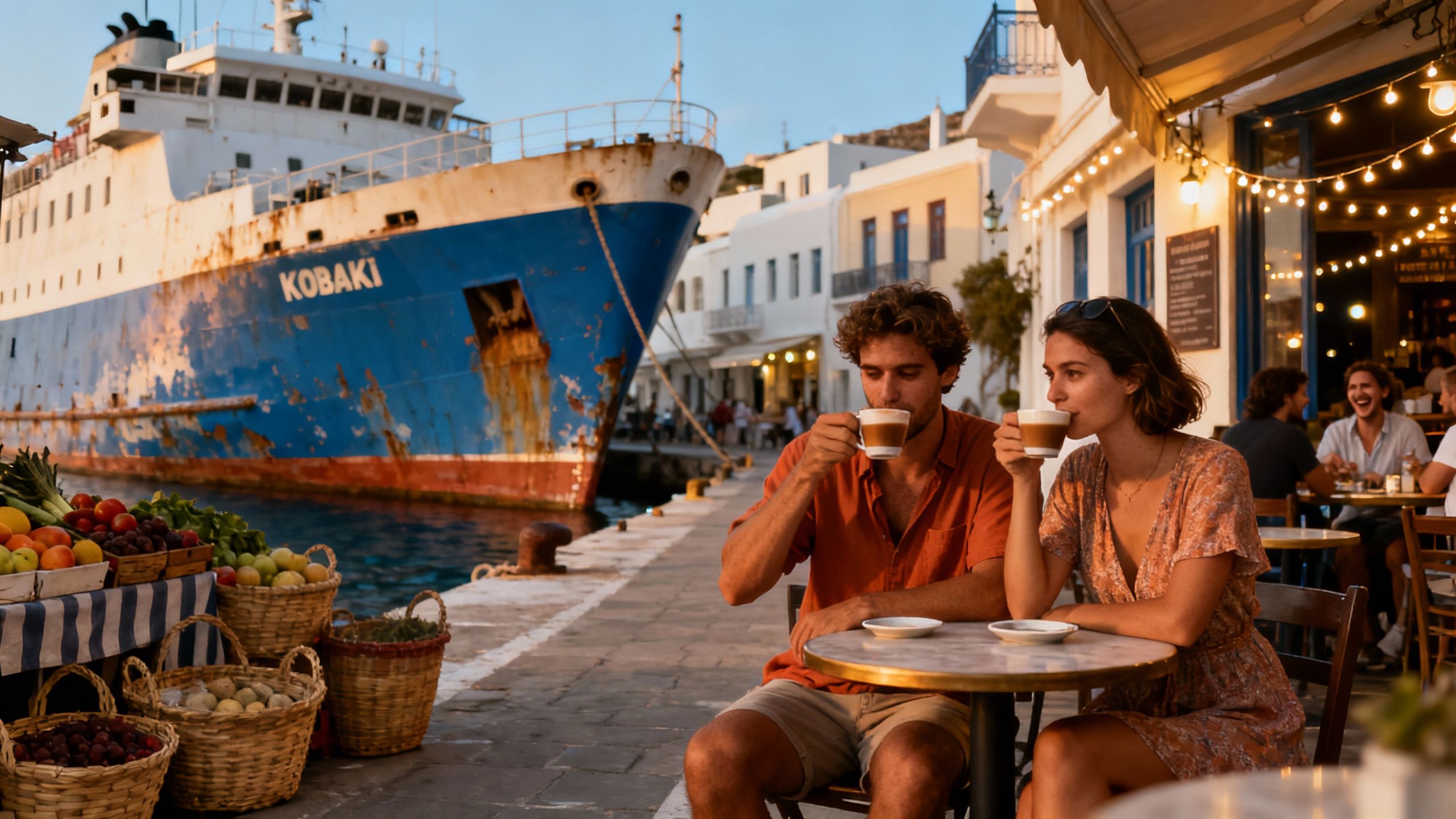Italy’s Urban Hubs: Buy for the Life, Not the Postcard
Italy’s urban hubs offer vivid daily life and regional price divergence; pair neighbourhood-first visits with ISTAT and Immobiliare data to buy for life, not a postcard.
Imagine starting your morning with a cornetto and espresso in a narrow piazza, then walking five minutes to view a light-filled second-floor apartment whose windows open to centuries-old facades. That sensory, slow-motion life is Italy: tactile stones, market cries, neighbourhood cafés that double as living rooms. For international buyers the romance is immediate, but the practical questions arrive fast — where value sits, how seasons change demand, and which urban hubs deliver everyday life rather than a postcard.
Living the Italy lifestyle — city rhythms and small pleasures

Daily life in Milan, Rome or Bologna is built around micro-habits: an early espresso standing at the bar, a lunchtime mercato run, an evening passeggiata. Each city has a different tempo — Milan moves with workaday precision and design salons; Rome folds religion, history and neighbourhood squares into daily life; Bologna centres on food, bicycles and student vitality. These rhythms influence what you buy: compact, efficient apartments for Milan; high-ceiling central flats for Rome; family-sized apartments near parks and schools in Bologna.
Milan: neighbourhoods that balance design and liquidity
Walk Navigli at dusk and you see why buyers pay for atmosphere: canals, aperitivo crowds and design boutiques. But Milan’s asking prices are among Italy’s highest and liquidity attracts quick investor interest — a double-edged sword for lifestyle buyers. If you prize daily convenience, look to Porta Romana or Città Studi for quieter streets with easy transit; if capital growth matters, central Brera or the new Porta Nuova clusters offer proven demand but less bargain room.
Rome, Florence and Bologna: history, food and adaptable homes
In Rome, Trastevere and Prati give you cobbles and cafè life; Testaccio and Ostiense increasingly attract younger professionals seeking authentic food scenes. Florence and Bologna reward those who want walkable daily life — markets, family-run trattorie and university energy. Expect a premium for historic features like exposed beams and stone walls; their charm also brings maintenance commitments that figure into any purchase decision.
- Lifestyle highlights: specific corners and experiences
- Early-morning market in Campo de' Fiori, Rome — fresh produce and neighbourhood gossip
- Aperitivo on Navigli, Milan — social energy that sustains rental demand
- Sunday food-shopping in Mercato di Mezzo, Bologna — a signal of community rhythm
Making the move: practical considerations that preserve lifestyle

Romance must meet reality. National price indices rose in 2025 but vary sharply by city and region; Milan and Florence remain expensive, while southern regions still offer value. Those regional gaps create choices: buy where daily life fits you, or buy where raw price upside is likelier. Either way, you should translate lifestyle priorities into concrete property features before offers go in.
Property styles: what suits your daily life
Historic flats with high ceilings suit lovers of light and scale, but expect higher maintenance and stricter conservation rules. New-build apartments provide insulation, comfort and lower immediate upkeep — attractive for remote workers and families. Terraced townhouses in smaller urban centres offer outdoor space; ask about insulation, heating systems and seismic retrofitting — these technical details shape year-round comfort.
Working with local experts who know the life, not just the ledger
- How to align lifestyle and purchase — six practical steps
- 1. Map daily routine: tram routes, markets, schools, and habitual cafés — these determine the quality of daily life more than square metres.
- 2. Prioritise energy class and insulation — living costs and comfort depend heavily on heating and cooling efficiency in Italian buildings.
- 3. Ask agencies for true running costs: condo fees, extraordinary maintenance, and recent works documented in the condominio minutes.
- 4. Check zoning and heritage constraints early if you plan alterations; many central buildings are in conservation zones with tight rules.
- 5. Test rental potential by asking recent comparable rents in the same micro-street; tourist hotspots and university areas behave very differently.
- 6. Use a bilingual notary and local tax adviser for pre-offer checks — contracts, cadastral records and pending liabilities are non-negotiable.
Insider knowledge: expat lessons and seasonal truths
Expats often tell the same two stories: they fell for neighbourhood life and underestimated ongoing costs. Heating in historic buildings can be expensive; summer in coastal or central courtyards can be quieter than pictured. Conversely, buying outside peak tourist strips usually yields a more authentic life and steadier long-term rental demand. Timing your visit outside festival season shows a truer weekday rhythm.
Cultural integration: daily customs that shape where you live
Language matters but so do local rituals: knowing café owners, the mercado seller and the building superintendent (il portiere) speeds access to services and local intel. In many Italian cities the best business happens through relationships. Engage neighbourhood associations and seasonal events — they’re where community bonds form and where you’ll learn which streets are truly lived-in versus staged for visitors.
Long-term life: how your purchase ages with the city
Cities evolve; areas that feel peripheral today can gain infrastructure and desirability in years. ISTAT data show national price increases but also regional divergence, underscoring the value of local insight when estimating long-term performance. Consider properties that support daily living — good light, reliable transport, and flexible internal layouts — and you protect lifestyle value whether you stay or rent.
- Red flags local buyers point out
- Vacant upper floors in old palazzi with no elevator — check structural state and potential for installing lifts.
- Ambiguous condominio minutes or missing receipt for recent works — insist on documentation before signing.
- Properties marketed only in peak season — view off-season to see true noise and footfall.
If you crave life in an Italian city, prioritise neighbourhoods where everyday rituals match your own. If you want to invest, focus on transport links, regeneration projects and rental fundamentals rather than transient glamour. Work with agencies who can marry lived experience with precise records — they are the intermediaries who turn a dreamy piazza into a sustainable home or investment.
Next steps: visit outside festival peaks, ask your agent for condominium minutes, confirm energy class and heating expenses, and bring a bilingual notary into discussions early. Those steps preserve the lifestyle you imagined while reducing the surprises that follow. When you pair sensory knowledge of a street with data from ISTAT and local market platforms, you make a decision that fits both the heart and the ledger.
British expat who relocated to Marbella in 2012. Specializes in rigorous due diligence and cross-border investment strategies for UK and international buyers.


